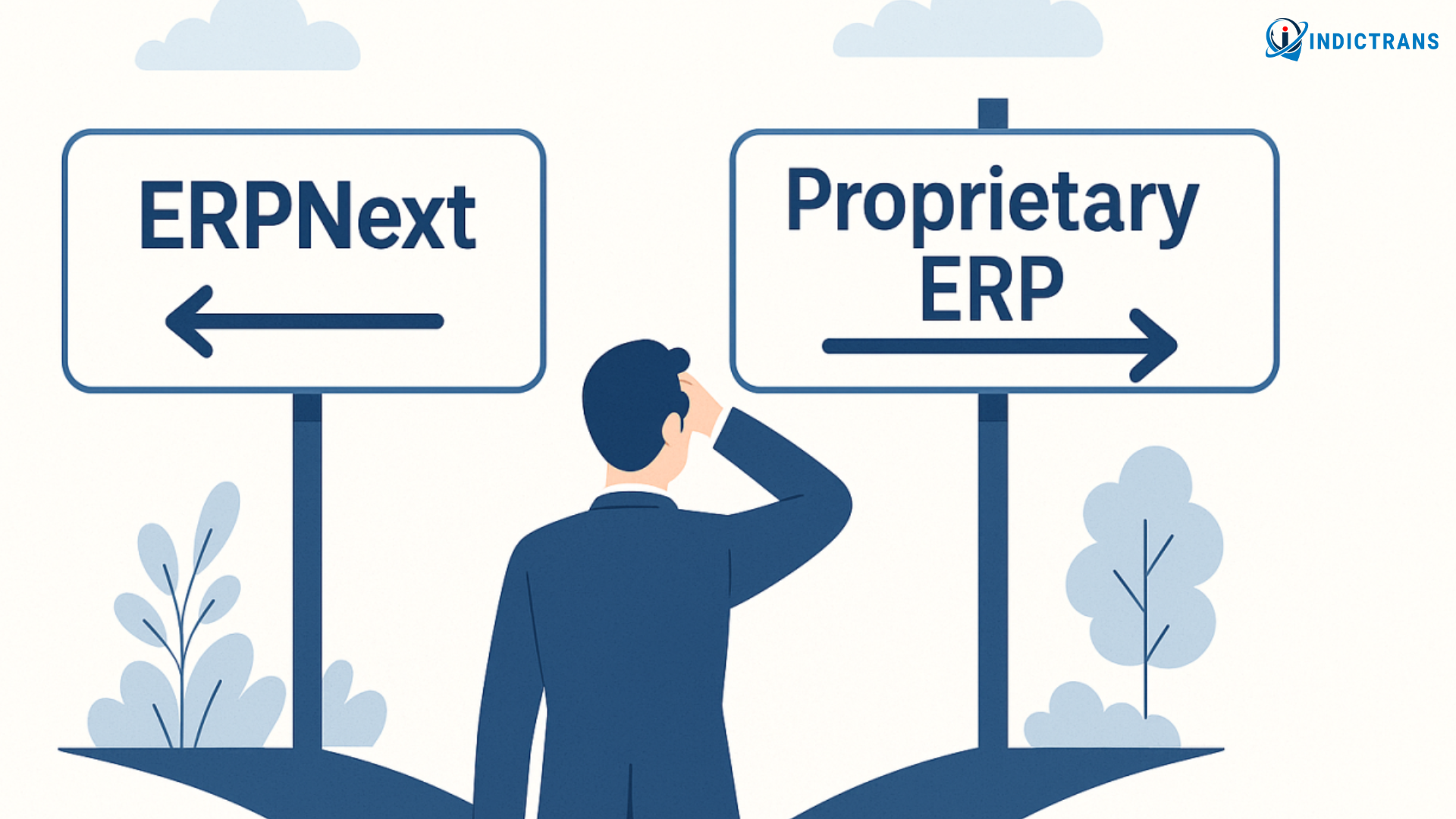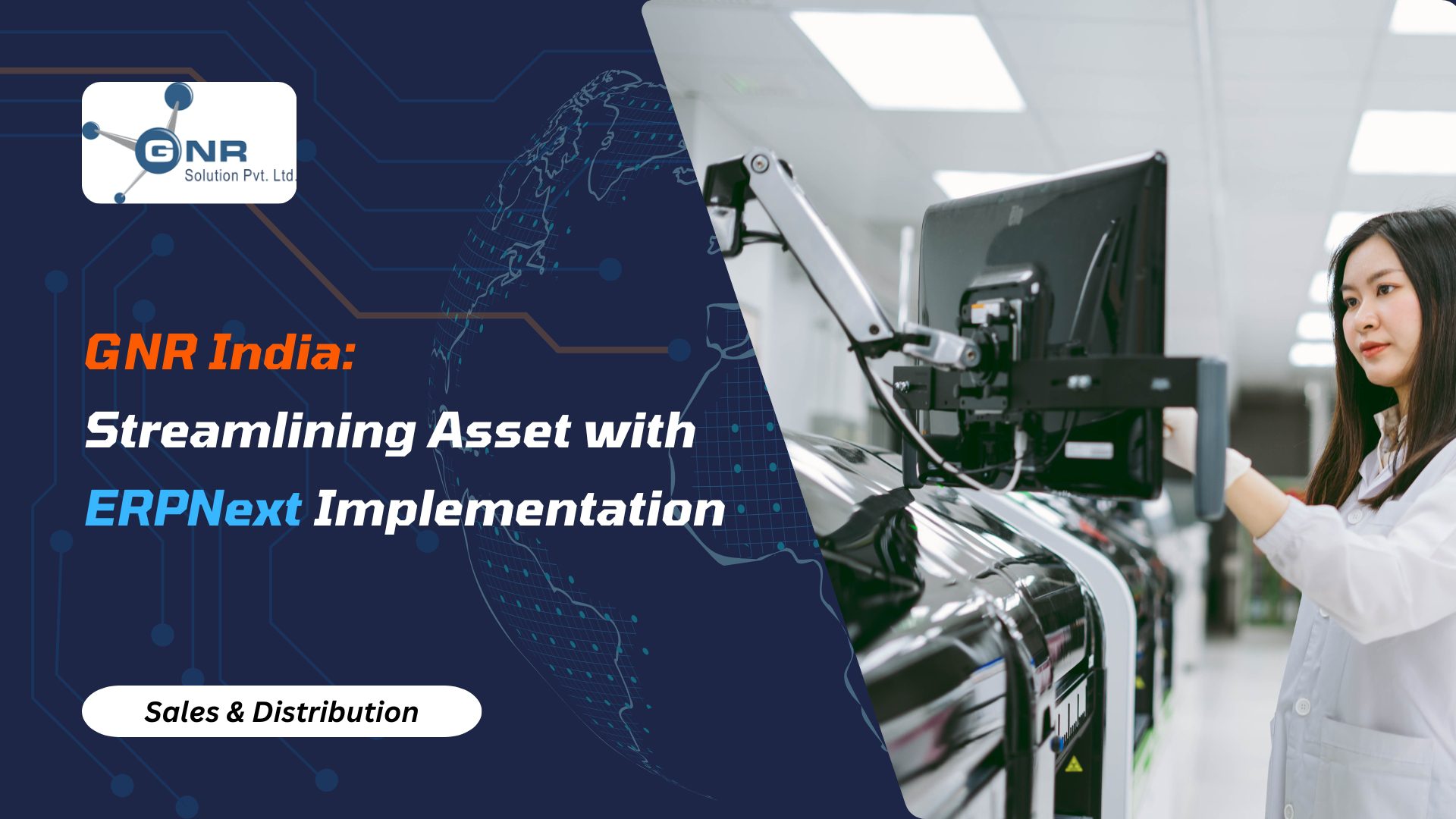Businesses, regardless of size or industry, require scalable technology, real-time data access, and efficient operations to stay competitive in today’s fast-paced digital economy. This is where ERP (Enterprise Resource Planning) systems come into play. When evaluating Open-Source vs Proprietary ERP solutions, it’s crucial to understand how each can help increase productivity, enhance decision-making, and reduce operational costs by unifying core business functions such as finance, inventory, human resources, manufacturing, and sales onto a single platform.
Businesses evaluating ERP solutions frequently have to make the crucial choice of whether to use an open-source option or a proprietary ERP system. In recent years, this argument has intensified, particularly as open-source systems become more well-liked due to their adaptability, cost, and community-driven innovation.
We’ll examine the benefits, drawbacks, and main distinctions between open-source vs proprietary ERP systems in this blog. Although each option has advantages, we’ll also demonstrate why more companies, particularly SMEs as well as Enterprises and growth-oriented organizations, are choosing open-source ERP solutions like ERPNext, which are skillfully deployed by partners like Indictrans, in order to gain more control and long-term value.
Let’s dive in.
Understanding ERP Systems
What is an ERP System?
From accounting and finance to supply chain, inventory, human resources, customer relationship management (CRM), and more, an enterprise resource planning (ERP) system is a centralized software platform that integrates and manages a business’s essential operations. ERP ensures data consistency and operational efficiency by allowing all departments to function within a single, unified system rather than in silos.
The Importance of ERP in Optimizing Business Process Efficiency
Modern businesses deal with increasing complexity multiple departments, growing customer bases, and rapidly changing market demands. An ERP system helps streamline day-to-day operations by automating repetitive tasks, eliminating data duplication, and providing real-time insights across all functions.
Businesses can increase efficiency and productivity by implementing ERP.
- Based on real-time facts, make well-informed decisions.
- Improve departmental cooperation
- Assure data security and compliance.
- As activities expand, scale them smoothly.
At Indictrans, we’ve assisted businesses from a variety of sectors in utilizing ERP systems, particularly open-source platforms like ERPNext, to streamline workflows, increase flexibility, and take complete command of their operations.
Common Features in Modern ERP Platforms
ERP systems nowadays are much more than simple accounting instruments. The most reliable ERP platforms, whether open-source or commercial, consist of:
- Finance and Accounting: Oversee cash flow, invoices, taxes, and budgets.
- Supply chain and inventory management: monitor inventory, automate purchases, and streamline operations.
- Sales and CRM: Manage leads, sales funnels, and client interaction.
- Human Resource Management: Managing employee lifecycles, payroll, attendance, and hiring.
- Project management: is the planning, carrying out, and monitoring of tasks and deadlines.
- Analytics & Reporting: Create comprehensive dashboards and business reports.
With the correct ERP partner, such as Indictrans, a seasoned ERPNext installation firm, you can take advantage of these capabilities to revolutionize your company’s processes and spur sustained expansion.
What is Proprietary ERP?
Private businesses create and own proprietary ERP systems. These solutions usually offer little customization options and come with licensed software that limits access to the source code. Microsoft Dynamics 365, SAP, and Oracle NetSuite are well-known examples. Large businesses frequently employ these platforms because of their extensive feature set and solid track record of performance.
The following are important traits of proprietary ERP systems:
- Software that is closed-source (users cannot view the source code)
- Features that are consistent with the vendor’s roadmap
- Only the vendor or approved partners can provide official assistance.
Typical Models of Licensing
The majority of proprietary ERP systems function using:
- SaaS (subscription-based models): Regular monthly or yearly charges
- Per-user licensing: Fees determined by the quantity of users
- Feature-based pricing: Extra expenses for sophisticated connectors or modules
While these licensing models provide predictability in terms of support and updates, they often result in higher total cost of ownership (TCO) over time.
Vendor Dependency and Customization Limitations
One of the main drawbacks of proprietary ERP is vendor lock-in. Businesses must rely on the ERP vendor for updates, support, and even certain types of customizations. This can lead to:
- Long wait times for new features
- Costly customization fees
- Limited control over how the system evolves with your business
Pros and Cons of Proprietary ERP
Pros:
- Mature and reliable platforms
- Full vendor support and SLAs
- Extensive documentation and training materials
Cons:
- High upfront and recurring costs
- Limited customization flexibility
- Vendor lock-in and restricted data ownership
- Slower innovation due to centralized development
Over time, these licensing models frequently lead to greater total cost of ownership (TCO), even if they offer certainty in terms of support and upgrades.
You can also check : ERPNext vs Odoo
Limitations on Customisation and Vendor Dependency
Vendor lock-in is one of the primary disadvantages of proprietary ERP. For updates, maintenance, and even some adjustments, businesses have to rely on the ERP vendor. Long wait times for new features are one consequence of this.
- Expensive custom fees
- limited ability to influence how the system changes as your company does
Benefits:
- Reliable and mature platforms
- SLAs and complete vendor support
- A wealth of training materials and documentation
Drawbacks:
- Expensive initial and ongoing expenses
- Limited ability to customise
- Data ownership restrictions and vendor lock-in
- Innovation is slowed down because of centralised development.
Many firms are switching from rigid, costly proprietary systems to flexible, open-source ERP platforms like ERPNext as they become more cost-conscious and nimble. Helping businesses move from proprietary ERP to open-source solutions that offer greater control, transparency, and scalability without the vendor burden is our area of expertise at Indictrans.
See How ERPNext Stands Out !!!
What is Open-Source ERP?
Definition and Key Characteristics
Software platforms with publicly accessible source code are known as open-source ERP systems. These platforms give companies complete control over the functionality, implementation, and customization of the system, in contrast to proprietary alternatives. ERPNext is a well-known open-source ERP program that includes extensive modules designed for contemporary companies.
Among the essential features of open-source ERP are:
- Source code is freely available.
- Bug fixes and community-driven improvements
- High degrees of scalability and customisation
- Self-hosting or cloud-based deployment options
Community-Driven Development
The community-driven approach to development of open-source ERP is one of its greatest advantages. In order to continuously enhance the program, add new features, and address bugs more quickly than most proprietary suppliers can, thousands of developers, contributors, and users work together. This leads to:
- Faster innovation cycles
- Fast security updates
- A thriving ecosystem of integrations and add-ons
Cost-effectiveness, transparency, and flexibility
Businesses that use open-source ERP benefit from:
- Flexibility to add modules, change the UI/UX as necessary, and personalize workflows
- Openness with complete access to the inner workings of the system
- Cost-effectiveness, with reduced long-term ownership costs and no license fees
SMEs and mid-sized businesses, who require flexible solutions without the financial burden of expensive license fees, find this degree of independence particularly alluring.
The benefits of open-source ERP
- Absence of license fees considerable financial savings
- Complete control and personalization
- Strong user and developer communities
- Increased openness and ownership of data
- Future-ready and scalable
Drawbacks
- Implementation may need technical know-how.
- Support is dependent on knowledgeable partners or the community (e.g., Indictrans).
- Without the proper direction, initial setup and configuration might be difficult.
Many businesses collaborate with open-source ERP specialists like Indictrans, who offer extensive domain knowledge, installation expertise, and continuous support for platforms like ERPNext, in order to get over the technical obstacles.
Key Comparison Factors: Proprietary vs Open-Source ERP

When Should You Choose Open-Source ERP?
Although there isn’t a single, universally applicable open-source ERP solution, many companies, particularly small and mid-sized organizations, find it to be a strong substitute for conventional proprietary systems.
When cost savings are a top concern, organizations ought to think about implementing an open-source ERP system. Because open-source solutions don’t charge for licensing, companies can invest in areas that add value, like training or customisation.
- Personalization is essential. Deeper system customization is made possible by open-source platforms’ flexibility, which is advantageous for companies with special workflows or non-standard procedures.
- Control and ownership of data cannot be compromised. Organizations can choose how and where their data is stored, accessed, and protected while using open-source ERP.
- Scalability is crucial. Open-source ERP may readily expand with enterprises without requiring expensive license upgrades.
Common Myths About Open-Source ERP – Debunked
Even if open-source ERP technologies are becoming more and more popular, a number of myths still affect choices. It’s necessary to counter these myths with facts:
Myth 1: Open-source ERP systems are not secure
This is one of the most popular concerns and one of the most false. International communities create and evaluate open-source systems. Vulnerabilities are found and fixed promptly. Partners like Indictrans Technologies provide maintenance assistance, frequent audits, and secure deployment alternatives for companies who are security-conscious.
Myth 2: No expert assistance is available
Open-source ERP systems do depend on community forums, however there is a lot of professional-caliber help available. To guarantee company continuity and little downtime, implementation partners like Indictrans offer consultancy, deployment, integration, training, and continuing support services.
Myth 3: Open-source ERP is only for tech-savvy teams
The user experience is a priority in the design of contemporary open-source ERPs such as ERPNext. Non-technical staff may easily access, manage, and optimize the system with the correct onboarding procedure. To facilitate a seamless and effective adoption process, Indictrans provides clients with training, documentation, and customized user experiences.
Final Verdict: Why Open-Source ERP is the Smarter Choice
Cost, flexibility, security, innovation, and long-term sustainability are all important considerations when comparing ERP systems, and it is clear that open-source platforms provide a number of advantages over proprietary ones.
Companies no longer have to bind themselves to expensive, inflexible vendor ecosystems.
Rather, they can gain from:
- Reduced overall cost of ownership
- Complete openness and control over data
- Unrestricted innovation freedom without vendor limitations
- Quick response to business requirements
ERPNext and other open-source ERP platforms are always changing thanks to community-driven development approaches. This guarantees that companies maintain their resilience and competitiveness in the face of shifting market conditions.
How Indictrans Can Support Your ERP Transformation
Making the switch to a new ERP system, particularly an open-source platform, calls for preparation, skill, and execution. End-to-end ERPNext services are offered by Indictrans Technologies to assist companies in achieving success at every turn.
Among our ERPNext offerings are:
- ERP readiness evaluation and business process analysis
- Implementation and module development of custom ERPNext
- Connectivity to external systems
- Cloud and on-premise hosting solutions
- Version upgrades, user training, and post-deployment support
Understanding your present ERP environment and figuring out how open-source ERP might boost productivity and expansion for your company are the goals of us.
Our ERPNext services include:
- ERP readiness evaluation and business process analysis
- Implementation and module development of custom ERPNext
- Connectivity to external systems
- On-premises and cloud hosting options
- Version upgrades, user training, and post-deployment support
- Business process analysis and ERP readiness assessment
- Custom ERPNext implementation and module development
- Integration with third-party systems
- Cloud and on-premise hosting solutions
- Post-deployment support, user training, and version upgrades
Conclusion
The need for open-source ERP systems is rising quickly as companies continue to seek adaptable, scalable, and cost-effective solutions. In the debate of Open-Source vs Proprietary ERP, open-source platforms often deliver greater value, control, and long-term viability—especially for SMEs and mid-market businesses.
With the support of seasoned partners like Indictrans, platforms such as ERPNext empower businesses to scale without constraints, maintain full data ownership, and streamline operations effectively.
If you’re exploring ERP options or planning a digital transformation, now is the ideal time to view Open-Source vs Proprietary ERP not just as a technical choice, but a strategic business decision. It’s a smarter way to operate in today’s evolving landscape.
Don’t Forget To Follow Us On: LinkedIn






